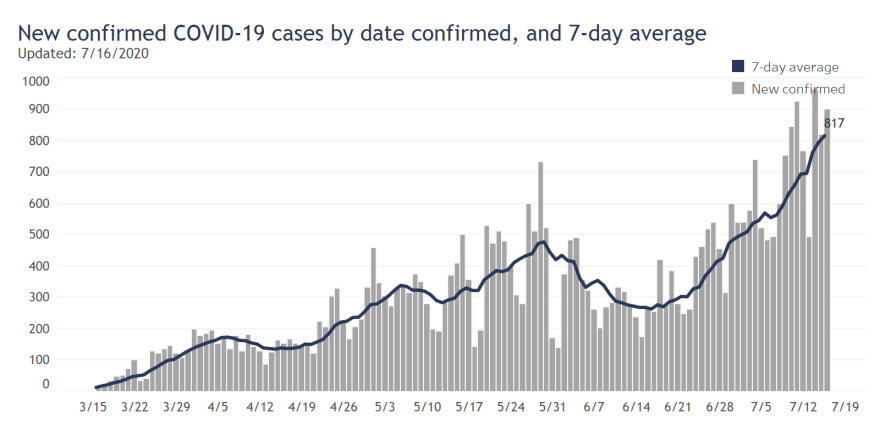The Wisconsin health briefing struck a somber note Thursday afternoon as officials continued to urge residents to wear masks if they have to leave home and to, also, practice socially distancing.
The only people sharing the message at the virtual news briefing were Ryan Westergaard, chief medical officer of the Bureau of Communicable Diseases, and state health officer Stephanie Smiley.
Each spoke briefly, Smiley first, laying out the latest coronavirus numbers — more than 39,600 cases. "Which is an increase of 900. Unfortunately, we’re reporting four more deaths in our state today, for a total of 831 people passing away from this virus," she said.

Wisconsin is seeing "significant community spread" of the virus, according to Smiley. She said this is especially true among 20 to 29 year olds, many of whom are spending more time socializing.
"In April, we were not seeing that many cases in that age group that had reported engaging in activities like meeting up with friends and having gatherings. Fast forward to May, we saw about 12%. ... In June that number rose to about 30%." Smiley added, "So we are anxiously waiting for the data to see what July looks like, but it not a trend that is a positive one."
Chief Medical Officer Ryan Westergaard recommended wearing face masks, although it appeared he was having trouble keeping his own in place as it occasionally slipped below his nose.
He said the more people take the practice seriously, the better off the state will be.
"I think if we could get to 90% or above masks in public locations, particularly in social gatherings where people tend to be in close contact, I think that could very conceivably make our numbers go down in the short term," Westergaard said.
In the same breath, Westergaard said, it's critical that anyone exposed to or diagnosed with the coronavirus stick to quarantine or isolation protocols.
"So between those two things — the very focused, aggressive isolation and quarantine and other the social supports that must go along with that, and widespread wearing of masks — I think we could get this back under control. It’s not a foregone conclusion that this is going to get away from us. I think if we did those things very well, we could flatten the curve again," Westergaard said.
Before, he added, other respiratory viruses pick up in the fall.
Editor's note: Audio courtesy of WisconsinEye.
Have a question you'd like WUWM to answer? Submit your query below.
_






